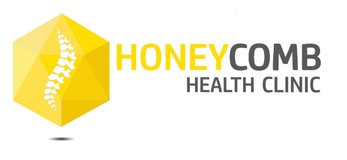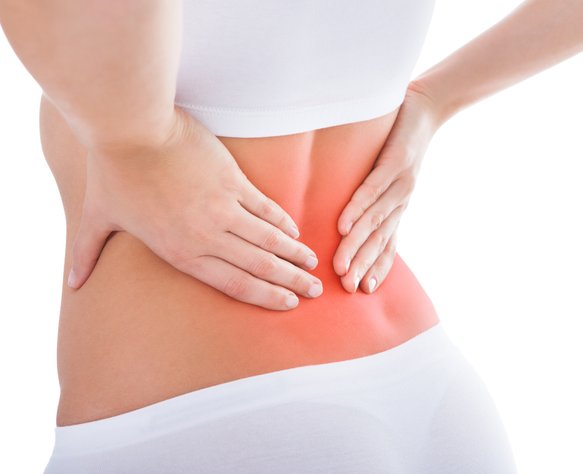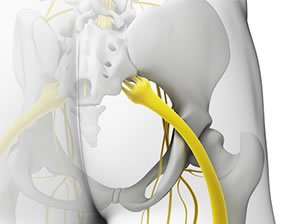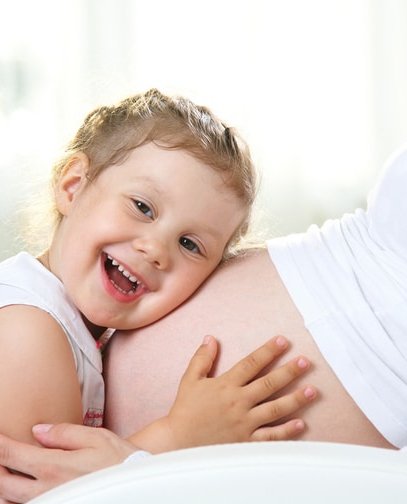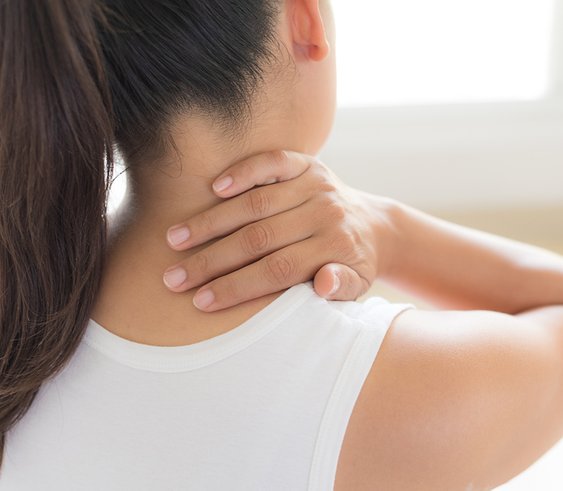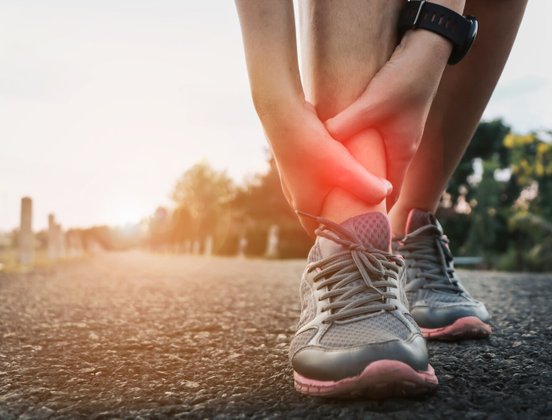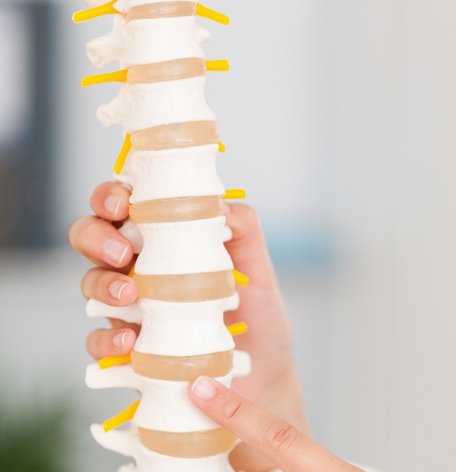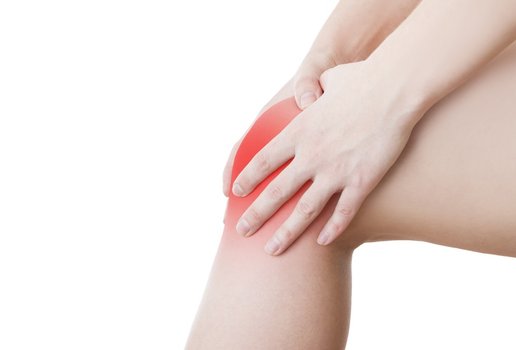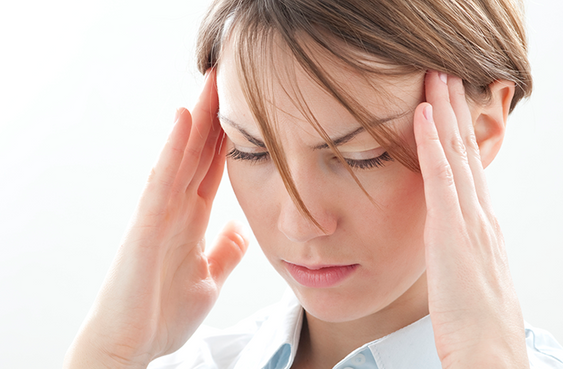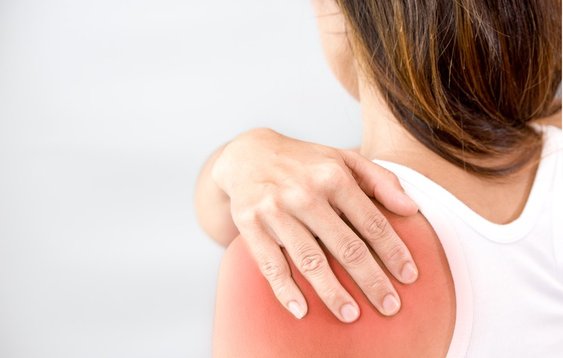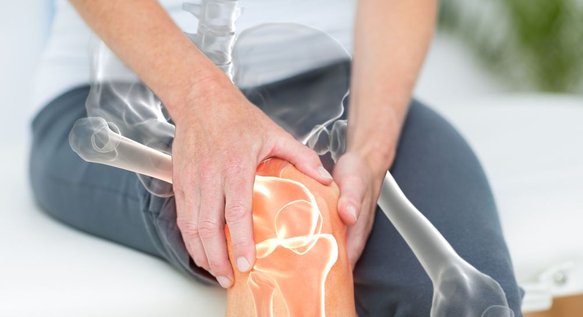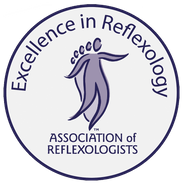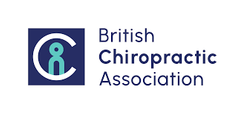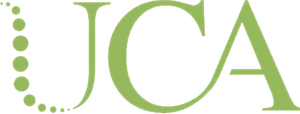Conditions We Treat
Disc Pain
Your spine is made of 24 vertebrae stacked one on top of each other separated by intervertebral discs. Each of your spinal vertebrae are connected via a pair of spinal joints, muscles and interspinal ligaments, they form a central bony canal which houses and protects your spinal cord. Vertebral discs resemble onions they have several outer layers with a central jelly. Discs are like tyres functionally they act as spinal shock absorbers and protect your spinal joints. Spinal nerves exit from the spinal at every level of your spine and leave from spinal canals which sit adjacent to the intervertebral discs. Tearing of your disc can result in a bulging/slipped disc, which can cause nerve compression.
The most common injury mechanism for tearing your discs is lifting combined with bending and twisting.
- 70 -80% of disc bulges occur at the lowest spinal vertebrae known as your L5/S1 unit.
- Disc herniations can lead to nerve compression into both legs
- Disc bulges can make sitting, bending and standing very uncomfortable
- Avoid Bending and lifting as they can exacerbate disc and joint irritation in your spine
- Discogenic pain can be related with severe back and leg pain if there is nerve compression
- 1% of patients who visit a chiropractor require disc surgery as compared to 47% who did not.
- Non-steroidal anti-inflammatory can help ease disc and nerve pain
- Bowel and bladder function can be affected by slipped disc due to compression of S1-S3 nerves within your pelvis, seek medical attention if you have any numbness or loss of control.
Knee & Ankle Pain
Knee injuries are more than often seen in long distance runners, jumpers and football injuries with twisting and loading being a common cause for these injuries.
Acute sport injuries presenting with significant inflammation and bruising may result from stress fracture, ligamentous tearing or sprain or muscular injury.
With other structures in the knee like the meniscus, anterior cruciate ligament, collateral ligaments and posterior cruciate ligament lack of joint stability can be indication for a tear or injury.
As a hinge joint if the knee joint is damaged straightening and bending the knee can prove to be extremely painful alongside weight loading if you are having difficulty you will need to seek help and advice from a health care professional.
Headaches & Migraines
Are you suffering with dizziness or vertigo, have you been having issues with persistent headaches and disorientation, as healthcare professionals we are able to diagnose and provide manual treatment for benign paroxysmal positional vertigo, migraines and Headaches? Did you 10 million people in the UK suffer with headaches, this means 1 in 6 people suffer with head related pains. Around 4 million people experience recurrent headaches daily or suffer with migraines. Headaches are often have varying causes some of which are, stress, tension, sinusitis, alcohol or chemical induced and allergy related. There are several types of headaches which can vary in frequency, location and symptoms:
- Cluster Headaches – Similar to alarm bells, typically occur at night, brief but occur frequently
- Cervicogenic Headaches
- Thunderclap Headaches – Subdural Haemorrhage or aneurysm
- Tension-type Headache
- Sinus Related Headache
- Migraine/Aura – Periorbital or around the temporals, throbbing or pulsing sensation, present with light and sound sensitivity with associated nausea/vomit, unilateral arm and leg symptoms or facial
Cervicogenic headaches can be caused from several structures from upper neck joint and muscle tension to sinusitis and dehydration. Improving neck mobility and reducing stress and tension in the upper neck muscles can significantly reduce their occurrence. Migraines are typically caused by vasculitis or inflammation around your vessels. Any factor which increases inflammation in your body such as stress and tension as well as pro-inflammatory agents, can increase their frequency. Spinal manipulation of the first spinal unit, atlanto-axial joint can significantly reduce the occurrence of headaches by releasing upper neck muscle tightness.
- Headaches can cause a constellation of symptoms;
- Tinnitus
- Dizziness
- Blurriness/Double vision
- Throbbing/pulsing Headache
- Tension at base of skull, neck, head and shoulders
- Photophobia – Light sensitivity
- Phonophobia – Sound Sensitivity
- Peri-orbital PainFrequent Headaches alarm bells at night
- Vertigo – Spinning sensations
- Nausea/Vomiting
- Arm/ face sensitivity on one side of the body briefly
Shoulder Pain
Shoulder pain and injury whether acute or chronic can be managed by our practitioners, are you having difficulty raising your arm, lying on your side or reaching overhead, most common cause of shoulder pain is injury to your rotator cuff muscles caused by tendinopathies or tendinitis as a result of repetitive wear.
Sport injuries from contact sports like rugby, boxing or lifting injuries can cause dislocation and possible muscle tears, which can result in loss of strength and movement in the shoulder. Chiropractic care and manual therapy can help realign the injured joints and rehabilitate your muscles back to recovery. Other repetitive strain injuries include irritation to the wrist muscles which insert into your elbow resulting in tennis and golfer elbow.
Osteoarthrities
Chronic joint pain with progressive stiffness and immobility is common presentation of joint arthritis. With aging our joints become dehydrated and narrowed which limits mobility and function. This can often present with restricted movement of the joint and a dull background ache across the joint area, muscles can tighten and overcompensate which can cause pain to radiate along the spine or across your back.
Hip, knee and shoulder joints can often become arthritic and cause constant ache across the joint lines, with manual therapy we focus on maintaining and improving the movement of your joints by opening the joint space and release surrounding muscles and ligaments.
Lower Back Pain
Are you tired of having to compensate for a bad back, if you feel your back is holding you back from doing the things you really want to do then chiropractic treatment is the right solution? Did you know 70-80% of lower back pain originates from musculoskeletal sources. The musculoskeletal system involves a host of structures including, joints, discs, ligaments, nerves and muscles which are all connected. Lower back pain also known as lumbago is pain felt at the base of your spine it can often involve injury to the spinal joints, sacro-iliac joints, disc or nerves. Lower back pain can often be associated with leg pain if there is nerve compression either due to spinal narrowing from wear and tear or a slipped/bulging disc.
Acute lower back injuries, where you feel you’ve pulled your back out commonly presents with intense lower back pain and significant limitation of movement. Facet joint sprain/strain or facet lock is the most common acute back injury, this is where a spinal joint becomes locked in an incorrect position like a door hinge that doesn’t want to move. This results in spinal muscular spasm, restricted mobility of your spine and localised inflammation. Standing and walking can become painful with a spinal joint injury, sharp pains can be felt when the joint is strained or loaded. Acute back injuries can be debilitating and can take 4-6 weeks to ease, lower spinal manipulation can immediately restore joint mobility, reduce muscle spasm and correct joint injury.
Sciatica
Sciatica refers to pain originating from injury to the sciatic nerve. The sciatic nerve is the longest nerve in the body and runs from your lower back down the back of your leg. Disc bulges compressing the L5/S1 nerve roots can often cause sciatica and present with shooting pains down the back of the leg, heel and foot. Sciatica can be felt in the buttocks, back of the leg and calf area as a cramping pain and can be associated with numbness and tingling. Nerve pain is normally aggravated with sitting, bending or even walking if the disc is involved. Arthritis in the lower spine narrows the nerve exits and can also cause nerve irritation typically aggravated by standing and walking. Sciatic compression can also occur at the muscular level as it passes through, these muscles include piriformis, gluteals and hamstrings.
- Did you know sciatica can be caused by compression in the piriformis muscle
- Sciatica often produces sharp shooting pains into your legs, buttocks and back
- Sciatic nerve is the largest and longest peripheral nerve in the human body.
- It passes deep in the buttock and down the back of the thigh all the way to the heel and sole of the foot.
Pregnancy & Paedeatrics
Give your child the best start to life come and see us at honeycomb health where we ensure both mother and baby get the best start to their new life. Majority of infants can sustain musculoskeletal injury secondary to assisted and difficult births. Congenital torticollis or difficulty with turning the neck to one side, causes a preference to look one way due to strained neck muscles called sternocleidomastoid. Neck stretching and gentle manual therapy can help release this muscle and aid better neck development in early neonates. Other difficulties with lying on their back difficulty with settling can result from muscular imbalances in the spine, early manual intervention aids development, reduces crying and improves sleeping in babies. Vontouse and forceps measures during birth can cause considerable neck strain and joint injury with birth as well as c-section, in-utero constraint or breech positioning can also put strain on your neonates development so seeing a chiropractor post birth can help identify and alleviate these areas of irritation to keep your child more comfortable.
Peadiatric chiropractic can help with :
- Congenital Muscular Torticollis – predisposition for babies to keep one sided head tilt.
- Irritable infant syndrome of musculoskeletal origin, this is caused by muscular and manual irritation in babies.
- Breastfeeding Difficulties – babies can have difficulty with latching due to limited movement in their neck and jaw as it limits their ability to head tilt.
- Infantile colic – disrupted sleeping and crying can be helped with chiropractic care.
- Milestone and Neurological development in neonates and through infancy
- Injuries and falls are commonly overlooked in children, however joint injury and neuro-muscular irritation can occur and cause children to compensate with altered biomechanics, correcting their alignment can help in development and maintain neuro-muscular health and function.
Neck Pain & Whiplash Injuries
Have you been in a recent head trauma or a road traffic accident and suffering with persisting neck pain, headaches, dizziness or radiating pain into shoulder blade and arm? Whiplash injuries often can cause chronic neck pain and stiffness and can progressively worsen days after the injury. Spinal facet joint injury is commonly seen in whiplash injuries due to the ratchetting motion the joints capsule can become jarred and locked. This can significantly reduce your ability to move your neck with recurrent sharp pains, particularly with turning the neck and looking up. Acute trauma can often result in injury to spinal muscles and ligaments causing instability, this can lead to localised inflammation and muscle spasm. Cervical Radiculopathy refers to a pinched nerve in the neck, it can occur as a result of neck trauma, lifting injures or slipped discs in the neck. Arthritis in the neck which can also be referred to as cervical spondylosis can cause nerve entrapment due to compromised nerve exits in the spine. Sharp shooting pains into the arms, neck and shoulder blade can often be an indication for nerve compression, tingling and numbness can also occur. Using a combination of soft tissue therapy, muscle release techniques and gentle neck manipulations we can restore joint function, reduce inflammation and release muscle spasms.
Our consultation will incorporate a full medical history and extensive neuro-muscular examination, this will aid us in identifying the cause for your neck pain and tailor the best treatment for you. Should you have any concerns with neck pain, don’t hesitate to get in touch.
Sports Injuries
Athletes and sportsmen can sustain repetitive strain and sprain injuries, due to overloading of joints, ligaments and muscles. Heavy lifting and dead lifts whilst very effective for strength training can be a main cause for disc injuries when you overload your spine with incorrect posture. Anterior talo-fibular ligament sprains are common ankle injury as a result of forced inversion with plantarflexion this can result in swelling around the ankle with significant bruising. Stress induces fractures are another risk for excessive loading as seen in runners and football players. Rib sprain/strain injuries or possible fractures is commonly seen in contact sports such as rugby or blunt trauma, this can result in difficulty breathing and discomfort with lying down.
Chiropractic can help with corrective joint realignment, muscular release and rehabilitation to get you active again. Regular chiropractic care can prevent your joints and structures from becoming overloaded and injured by corrective joint realignment, muscle release and stability training. It not only helps keep you moving well without pain, regular neuro-muscular releases and maintenance will support and enhance your neuro-muscular activation and performance.
